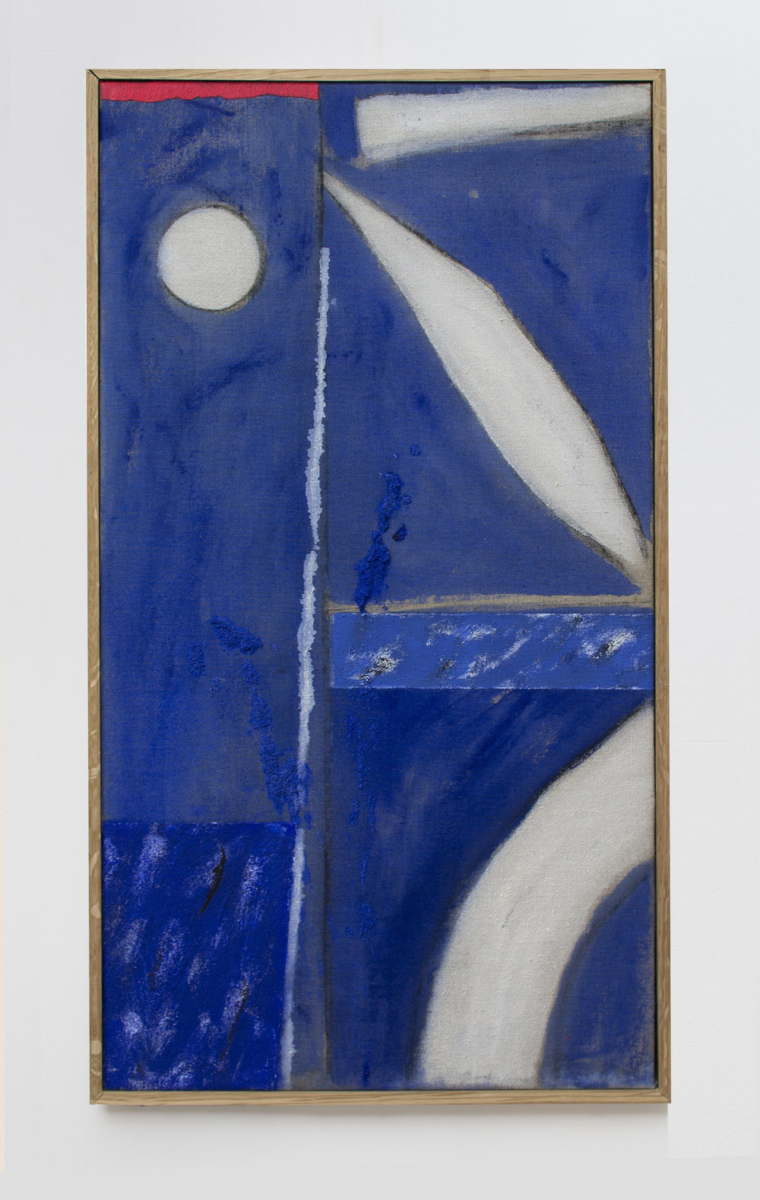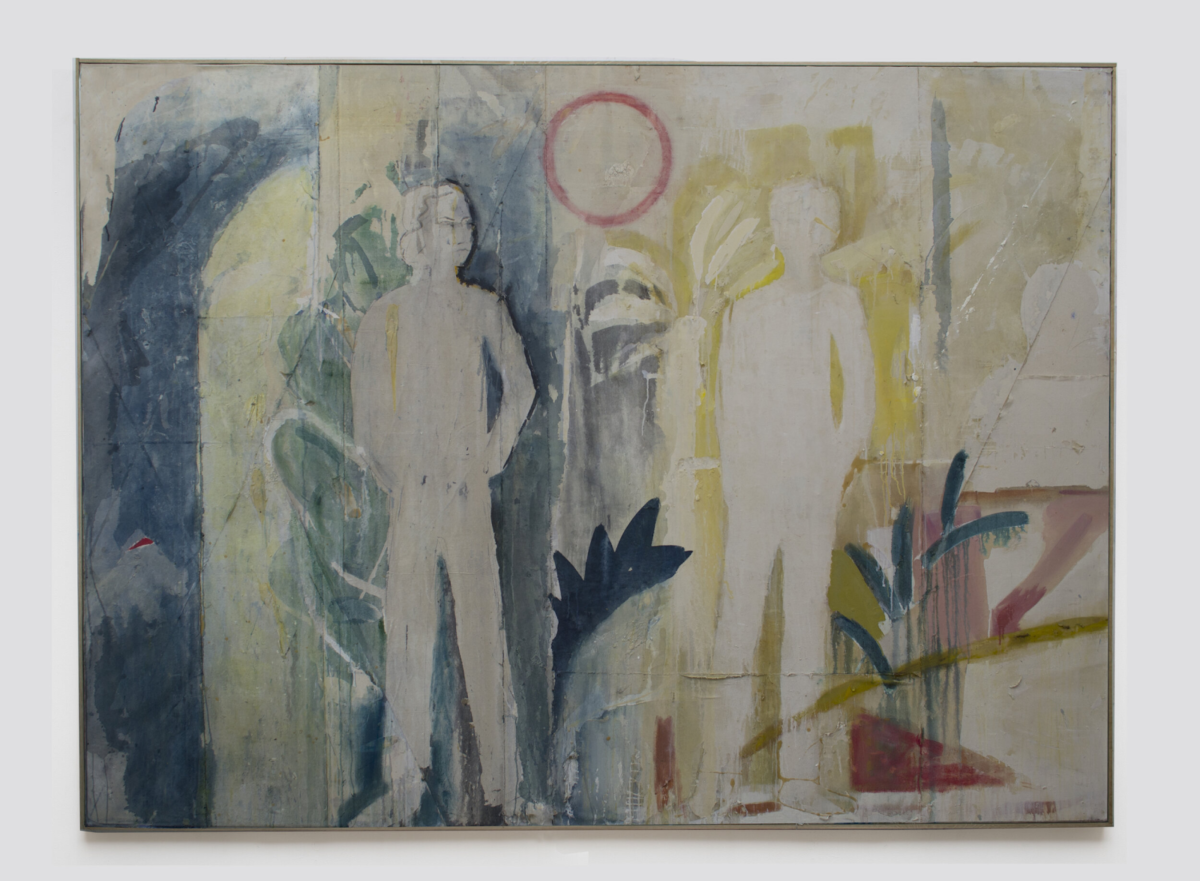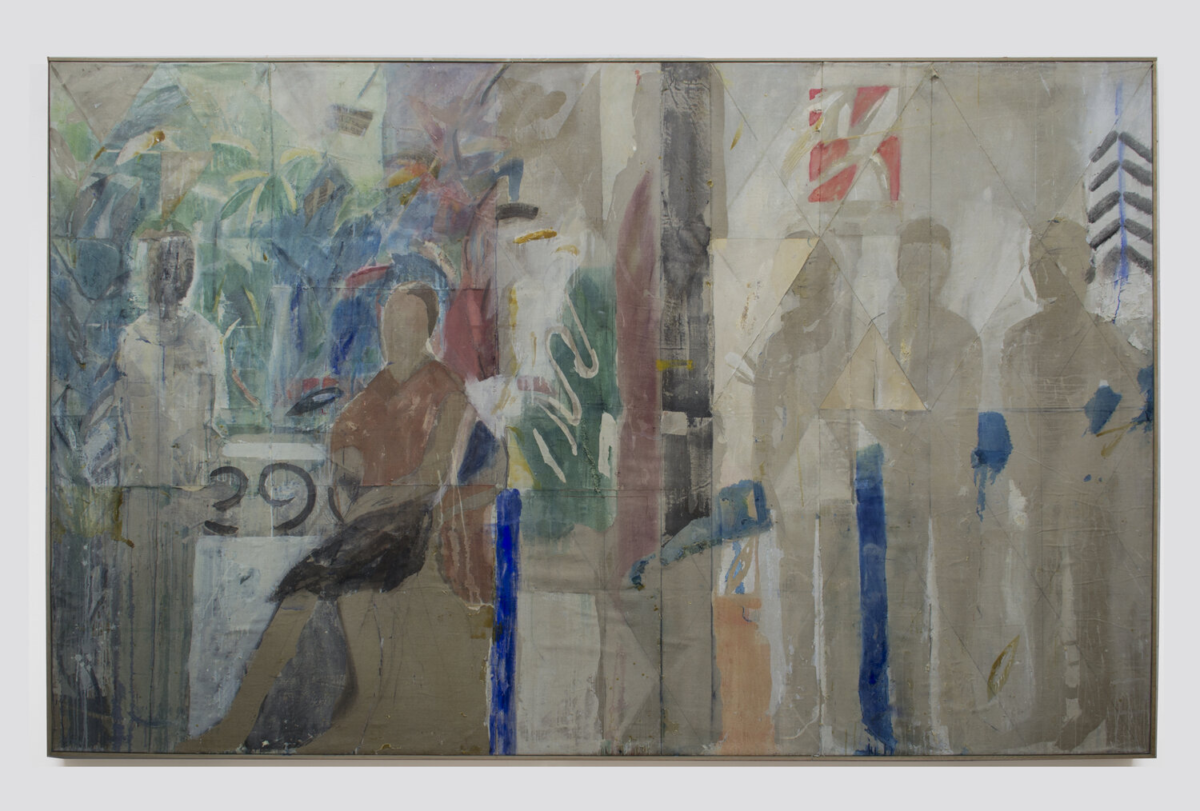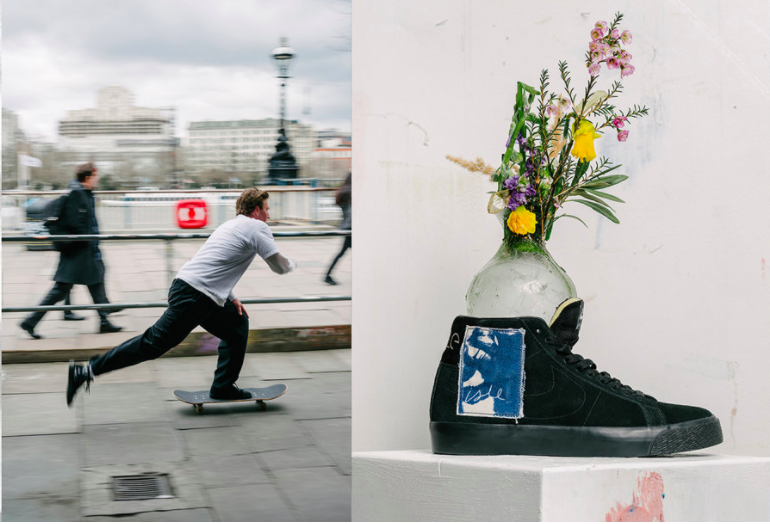Skateboarding and art are undeniably intertwined, with the former serving as a form of and engaging with the latter. Individuals like Nick Jensen exemplify what this intersection’s peak and produce. A talented skater and painter, Jensen’s style speaks to his London roots and his sensibilities in patterns and texture. Jensen’s body of work produces a clear aesthetic that is undeniably his own, while by no means obscuring his influences and inspirations. A co-owner of the brilliant Isle Skateboards, Nick has done everything from designing a Blazer for Nike SB, to curating and soloing multiple exhibitions in the UK. I decided to ask Nick a few questions to explore how art and skateboarding interact, what purpose they serve to one another, and to gain insight from his unique perspective.
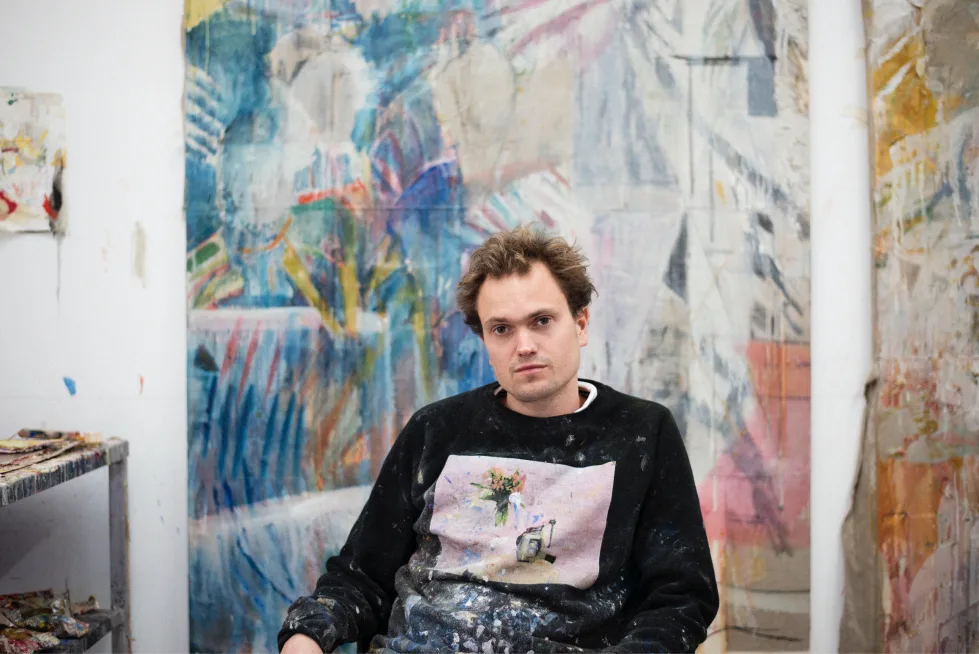
In your own opinion, is there such a thing as a British artist or skater? If so, what elements create this character, and do you see yourself fitting them?
Yes there definitely is. I can’t really quantify it. I think we shine through as having a defiant sense of individuality.
In both skateboarding and art, the element of motion is crucial. How do you approach this in the two, and is it influenced by the environment/medium that’s being employed?
Great question. Weirdly been starting to rotate paintings while I work on them with subtle washes. I like using the direction of the paint to indicate a horizon line or anchor the subject within the frame. Skate wise, there is no conscious decision with motion just that instinct directs the way / speed I skate. I wish I was more like Dennis Busenitz. One thing I would say is that both painting and skating are good measures of gravity.
One thing I’ve noticed particularly in your paintings is an affinity for texture, whether applied or implied, your work is seemingly never “flat”. For those not familiar with London’s streets, their not-so-friendly cracks and edges are truly a challenge to navigate on a skateboard. Would you say texture is something you consciously think about in art and skateboarding?
Yeah I am. I am not sure how conscious the link is between the two. But I remember when filming video parts I would always be drawn to finding crusty spots, things that were not really spots I suppose. With painting, I am trying to work on something that is inherently flat and material and yet has this potential to reveal a view into something.
Is your approach to skate graphics for Isle ever influenced by the fact that they very well might be destroyed by their users?
Yes, I like this aspect and I have thought about it a fair amount. I like to make graphics that feel delicate and held together by the click of a camera shutter. Often making installations in my studio and holding images up with masking tape, I leave pencil measurements visible and string to hang things off. The provisional nature in this is also the thing I like about skating.
You received a formal education in art at Central St. Martins and the Chelsea School of Art and Design. Most skaters are primarily self-taught, of course learning from peers and friends as well. Do you believe that your learning experiences influenced your style in either a significant manner?
Interestingly, Central St. Martin’s was a predominantly conceptual school and I was quite set in painting. There was no technical support for painting and no techniques were passed down. So it felt very self taught. It did make us really self motivated and to think about the why more than the how. After years I have come to learn how important the how is. I love experimenting and learning from materials and I just think being a painter takes years to find your language.
In an Out There video for Thrasher Magazine, your friend and amazing skater Tom Knox touched on how skateboarding still isn’t normalized within the UK. In addition, politicians in the UK limiting funding for the arts and the effects of COVID on artist’s careers both are reasons for concern. What is it like to have your passions be under such scrutiny and threat?
I feel like I have already experienced this opposition and I just keep my head down and focus on my work. Actually recently just got some SEISS payments (Self-employment Income Support Scheme) which has been helpful. Government set this up to help us in these dreary COVID times.
When commenting on your design for the Isle Skateboards x Nike SB collab, you mentioned how the cyanotype patch of the eye was supposed to represent the unique “eye” that skaters use to explore the urban landscape. Do you believe this eye’s vision is limited to only seeing architecture as a means for tricks, or are there other aspects of the city that are more visible to skaters?
Beyond the generic response, which would of course be yes, I think it’s interesting to think about what cities are designed for. The physical forms that describe a street in a city’s centre, revolve around the economy. The predominant function of a building, either housing or a workplace, is subverted by skaters, and I can’t think of that many other things that use the physicality of architecture in such a way. I think this is key to understanding a skaters sense of the world, to challenge convention and find an inspiring way to reinvent it.
Thank you for your time, Nick!
Cheers!

Switch Flip Manual Up a 3-Stair in Vase, Shot by Jacob Harris 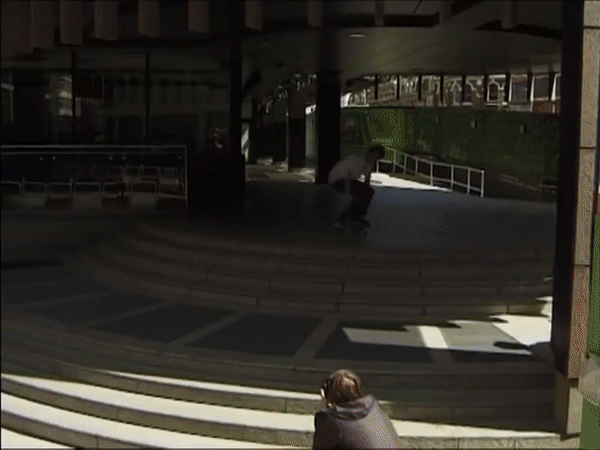
Switch Flip down a massive set in London in Vase, Shot by Jacob Harris
